Have you ever landed at an airport with views so spectacular they make you forget about the cramped economy seat you’ve been stuck in for hours? That’s exactly what it’s like arriving at Santos Dumont Airport (SDU) in Rio de Janeiro. With Sugarloaf Mountain and Guanabara Bay filling your window, it’s easily one of the most breathtaking approaches in the world.
In this guide, I’ll walk you through everything you need to know to make your time at SDU smooth, scenic, and stress-free.
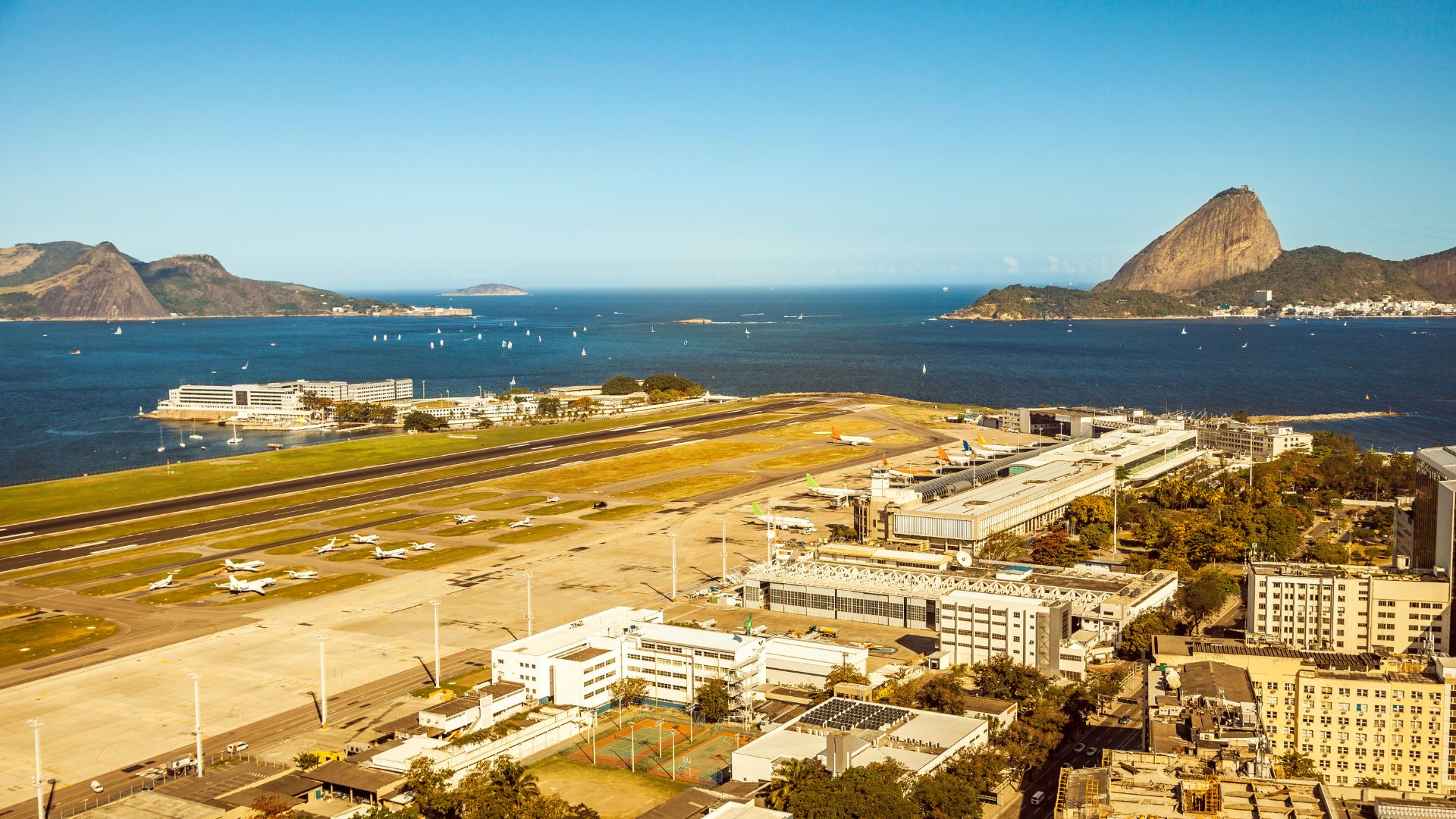
Understanding Santos Dumont: The Basics
Santos Dumont Airport is right in the middle of Rio, just 2 km from downtown, sitting next to Guanabara Bay. It’s a small airport with only one terminal, but it still handles a lot of passengers every year.
The airport handles exclusively domestic flights, primarily serving as one end of the famous Rio-São Paulo air bridge—one of the busiest air routes in the world. If you’re flying within Brazil, especially between major cities like São Paulo, Belo Horizonte, Brasília, Vitória, or Campinas, there’s a good chance you’ll find yourself here.
It is limited to 19 operations per hour and accommodates narrowbody, military, and general aviation aircraft only, due to short runway lengths and a challenging approach.
Quick facts to know:
- IATA Code: SDU
- ICAO Code: SBRJ
- Operator: Managed by XP Infra IV
- Timezone: UTC -3
- Elevation: Just 3 meters (10 feet) above sea level
- Airlines: LATAM, GOL, and Azul handle most flights
- Operating Hours: Generally 6:00 am to 11:00 pm
Top tip: If you’re connecting from an international flight, you’ll likely arrive at Galeão (GIG), so factor in transfer time if you’re catching a domestic flight from SDU.
The Scenic Approach: What Makes SDU Special
What really makes Santos Dumont stand out is the incredible landing. Planes fly in low over Guanabara Bay, with Sugarloaf Mountain and Christ the Redeemer in the background—it looks like something out of a postcard.
If you’re flying into Rio from São Paulo, try to sit on the right side of the plane for the best views. If you’re leaving Rio, the left side gives you amazing sights as you take off.
Many travelers say it’s the most beautiful landing they’ve ever seen—and it’s easy to see why. Aircraft like the 737-800 and A320/A320neo operate here regularly, but due to the short runway length and tight approach, they require specially trained pilots and precise performance calculations for every takeoff and landing.
But there’s a trade-off. The same mountains and water that make the view so special also make landings tricky. That’s why SDU has strict rules for flying in bad weather, and only specially trained pilots can land there.
If visibility is poor—especially in the rainy season—your flight might get sent to Galeão instead. So it’s a good idea to have a backup plan just in case.
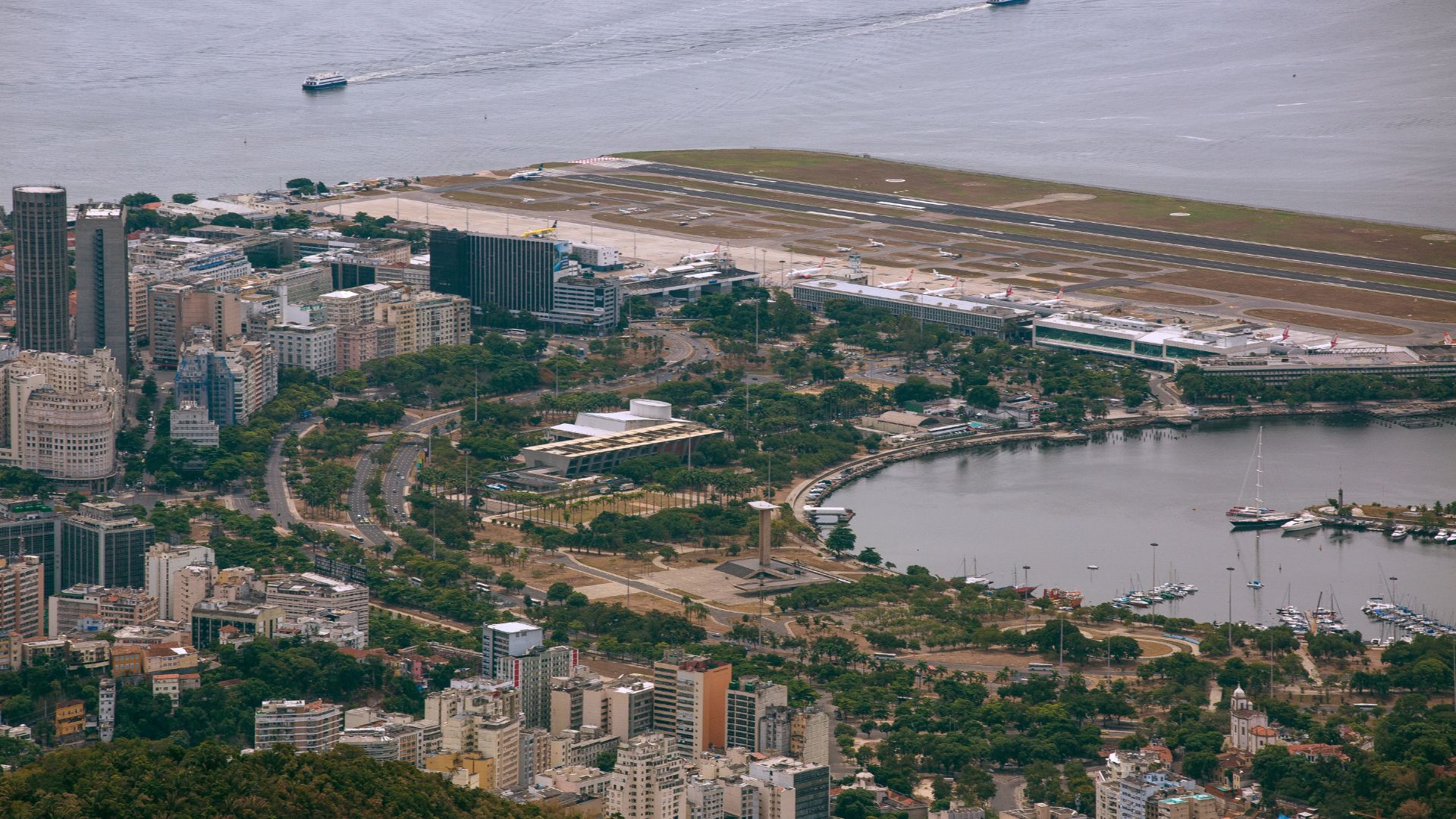
Getting To and From the Airport
This is where SDU really shines compared to most airports. Its central location means you have multiple convenient options:
VLT (Light Rail)
The VLT is my personal favorite way to travel to and from SDU. It’s clean, efficient, and gives you a nice little tour of central Rio. The airport stop is right outside the terminal, making it super convenient.
The VLT doesn’t enter the Metro stations directly. Instead, it stops nearby—usually less than a block away—so expect a short walk when transferring. From Cinelândia, you can easily reach popular neighborhoods like Botafogo, Copacabana, and Ipanema via the metro system.
It costs a few reais per trip (typically under R$5), but you’ll need a Riocard. I’ve noticed that locals prefer the VLT too—always a good sign when evaluating transport options in a foreign city. It’s particularly handy if you’re headed to Centro, Lapa, or Santa Teresa neighborhoods.
What I love about this option is that you avoid traffic completely and get to see a bit of the city on your way. Just be aware that it works best if you’re not lugging enormous suitcases.
Taxis and Rideshares
Taxis are readily available outside the terminal, but they tend to charge premium rates. I’ve found Uber and 99 (a local ride-sharing app) to be much more affordable options. A ride to Copacabana or Ipanema typically takes 15-30 minutes, depending on traffic.
Where to find rideshares at SDU:
- Exit the terminal and look for the designated pickup areas
- The app will guide you to the correct meeting point
- Confirm the driver’s details before getting in
Important safety tip: Ignore anyone inside the airport claiming to be a driver or offering a cheaper ride—they’re not official and often scam tourists. Always use the app to book, and double-check the license plate before getting in.
Bus Lines
If you’re looking for the most budget-friendly way to get around, city buses are a solid option. Several lines serve Santos Dumont Airport (SDU), stopping just outside the terminal. While they’re not as quick or convenient as the VLT or a taxi, they can still take you to many parts of Rio for just a few reais.
Some commonly used lines from SDU include:
- Line 2018 (Galeão x Alvorada – via Centro): This premium bus service connects Galeão International Airport (GIG) to the Alvorada Terminal in Barra da Tijuca, passing through downtown Rio. While it passes near SDU, it doesn’t stop directly at the terminal—you may need to walk a short distance or transfer to a local line or the VLT.
- Line 2101 (Galeão Airport – Santos Dumont Airport): Provides direct service between Rio’s two main airports, operating from early morning to early evening.
- Local Bus Lines: Several city bus lines, such as 167, 232, 309, and 483, stop near Santos Dumont Airport, offering connections to neighborhoods like Lapa, Glória, Botafogo, and other South Zone areas.
By Foot (Yes, Really!)
If you’re staying in Centro or the nearby Lapa district and traveling light, you can actually walk from the airport in about 15-20 minutes. I wouldn’t recommend this with luggage or during Rio’s scorching summer afternoons, but it’s a legitimate option for the minimalist traveler.
It’s not for everyone. I only do it when I’m traveling super light and arriving in the morning or late afternoon when the heat isn’t too intense. Trying this walk with a suitcase in Rio’s midday sun? Definitely not recommended.
A quick safety note: While the area is walkable, it’s best to avoid walking alone at night, especially if you’re not familiar with the surroundings.
Parking Options
On-site parking is available with short and long-term options if you’re renting a car or getting dropped off. However, given Rio’s traffic and the airport’s central location, public transportation is often more practical.

Inside the Terminal
Santos Dumont is compact by international standards. But don’t let its size fool you—it has everything you need for a comfortable pre-flight experience.
Layout and Navigation
The airport operates across three floors:
- Ground floor: Arrivals, transportation connections, and some shops
- Second floor: Departures, check-in counters, security, and embarkation areas
- Third floor: Additional services, including the Federal Police office, which handles Brazilian passport services only. There are no visa extensions or immigration services for foreign travelers, as SDU is a domestic-only airport.
The layout is generally wheelchair-friendly, with elevators, ramps, adapted restrooms, and designated parking available throughout the facility. For ground transportation, options like Uber’s wheelchair-accessible vehicles (Uber WAV) are available.
Food and Drink
Being connected to the Bossa Nova Mall, Santos Dumont offers more dining options than you might expect from a domestic airport:
- Several coffee shops (including Starbucks in the mall)
- A steakhouse restaurant
- Italian dining options
- McDonald’s
- Juice and açai shops
- A cat-themed café
Prices are predictably higher than in the city, but not outrageous by airport standards. If you’re on a budget, consider eating before arriving or grabbing something from the mall supermarket.
What I particularly appreciate is how easily you can move between the mall and airport without going outside. It makes Santos Dumont feel more like a shopping center with planes than a traditional airport.
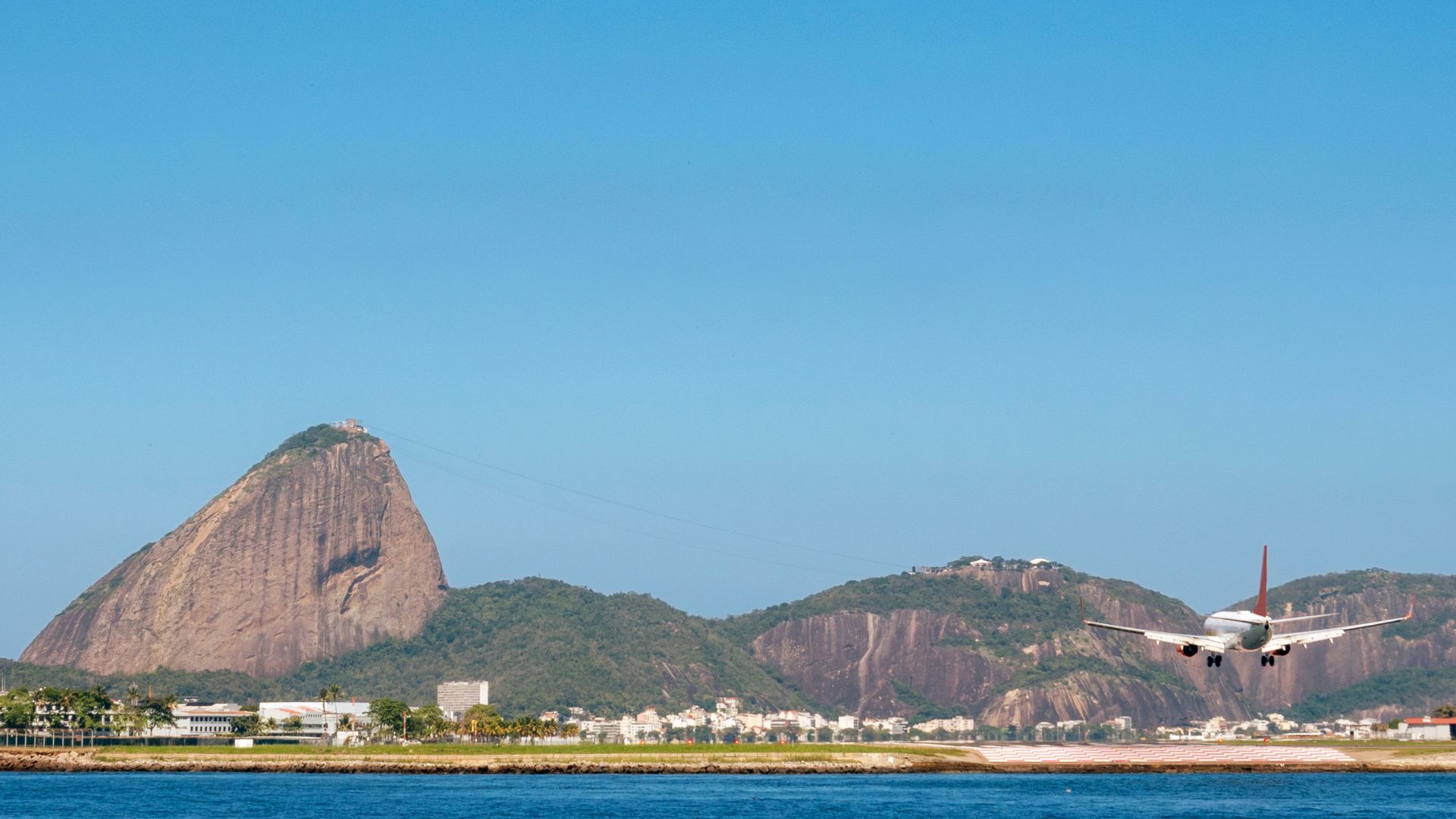
Check-in and Security
Despite being a busy airport, the check-in process at SDU is generally efficient. The compact size means you’re never walking far between check-in, security, and your gate.
Security lines can get lengthy during peak business travel times (early mornings and late afternoons), but they typically move quickly. Unlike international terminals, the domestic focus means less rigorous screening.
Top tip: If you’re flying during business rush hours (Monday mornings and Friday evenings), arrive at least 75 minutes before departure. For other times, 60 minutes is usually plenty.
Government Agencies
Several official agencies have a presence at Santos Dumont:
- Infraero Information Desk: Located in both the Departures and Arrivals areas, operating from 6:00 am to 11:30 pm
- Military Police: Found in the Arrivals Terminal with the same operating hours
- Federal Police Office: On the third floor, handling Brazilian passport services
Wi-Fi and Connectivity
Free Wi-Fi is available throughout the terminal at Santos Dumont Airport (SDU), but keep in mind that usage is often limited to 30 minutes, after which you may need to reconnect. As for charging, power outlets are limited, especially compared to more modern airports, so it’s a good idea to charge your devices before you arrive.
Top tip: If you need reliable internet, the mall cafés often have stronger Wi-Fi networks than the general airport system.
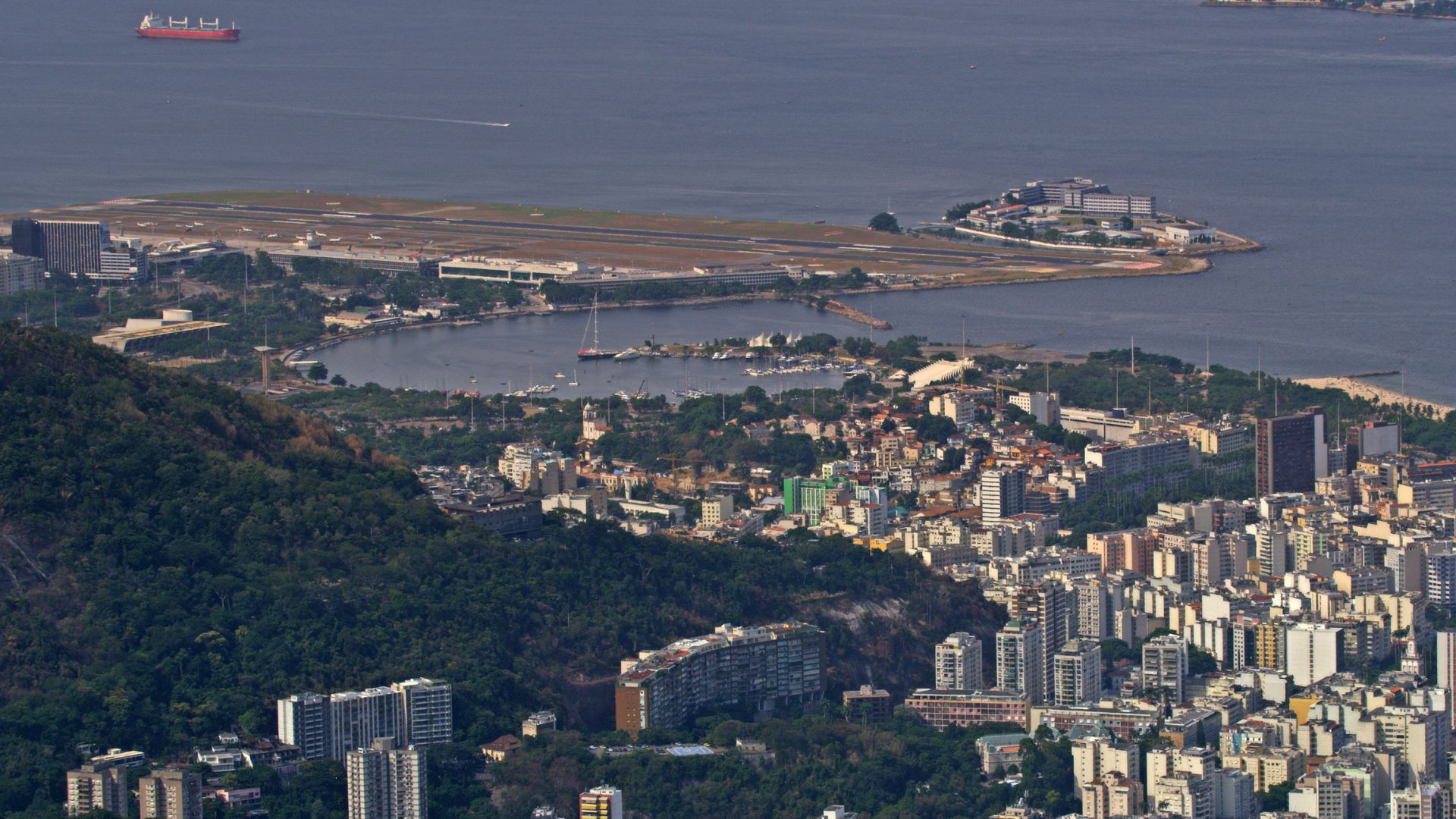
Practical Tips for Different Scenarios
Weather Effects
Rio has a tropical climate, which means:
- It gets really hot—typically over 40°C (104°F) in February.
- Most days are mostly above 30°C (86°F), even outside summer.
- The summer months (typically December to March) bring frequent afternoon showers.
- Winter (June to August) is cooler and has less rain.
Fog and rain can cause big delays. Because the airport is right by the water and surrounded by hills, planes need clear visibility to land safely.
That’s why, in bad weather, flights may be rerouted to Galeão (GIG), Rio’s larger international airport. If you’re flying during the rainy season, it’s smart to have a backup plan—just in case you end up across town.
When It Gets Busy
Santos Dumont handles a huge volume of passengers for its size—recent figures from 2023 show that traffic is climbing again, now approaching 9 to 10 million passengers annually, so it definitely has its busy times:
- 6–8 AM – Business travelers flying to São Paulo
- 4–7 PM – Return flights from business trips
- Friday evenings – A mix of business and weekend travelers
When to Arrive
Since SDU only handles domestic flights, you don’t need to arrive super early:
- Normal times: Get there 60–75 minutes before departure.
- Peak times (like Monday morning or Friday evening): Arrive 75–90 minutes early.
- Coming from far (like Copacabana): Add at least 30 more minutes.
- Boarding usually starts about 30 minutes before takeoff.
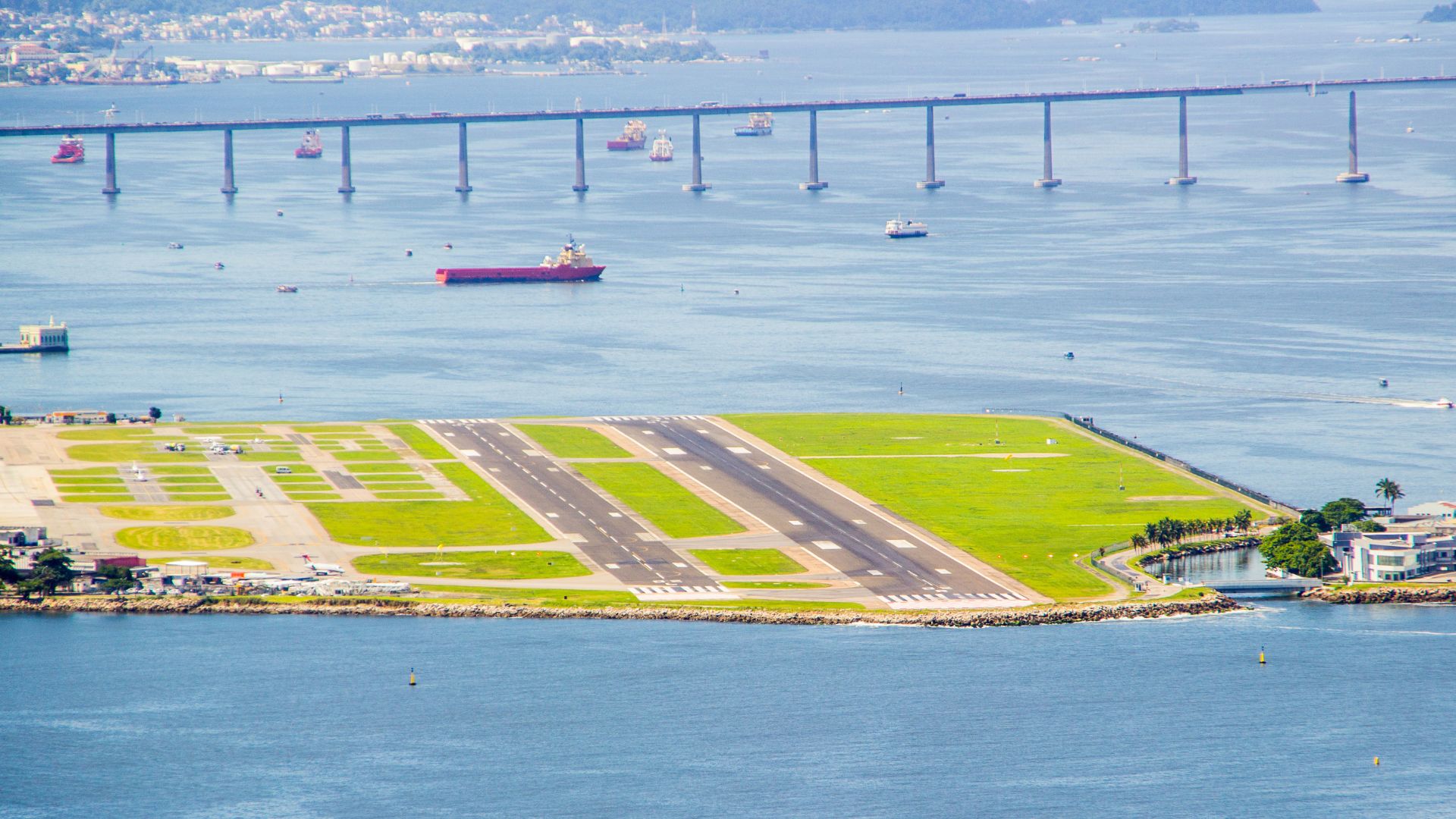
The Santos Dumont Experience
What makes Santos Dumont special isn’t fancy design or luxury features—it’s the feeling of Rio it gives you. It might not be the biggest or most high-tech airport, but it’s fast, efficient, and packed with amazing views.
So next time you’re flying within Brazil, think about flying through Santos Dumont. And definitely try to grab a window seat—the approach alone is worth it.
Sure, it’s not a flashy international hub, but it offers something better: a smooth arrival into one of the most beautiful cities in the world, with views that even seasoned travelers say are among the best anywhere.